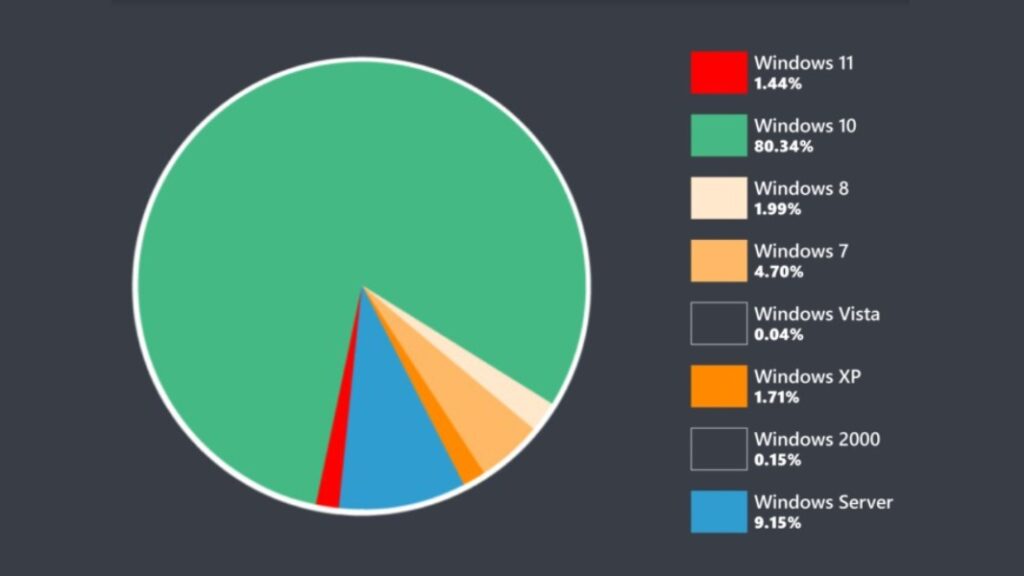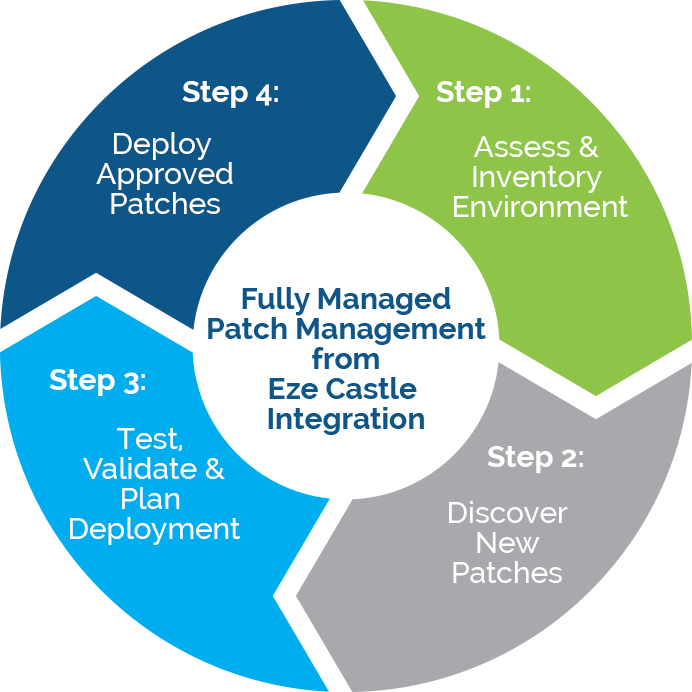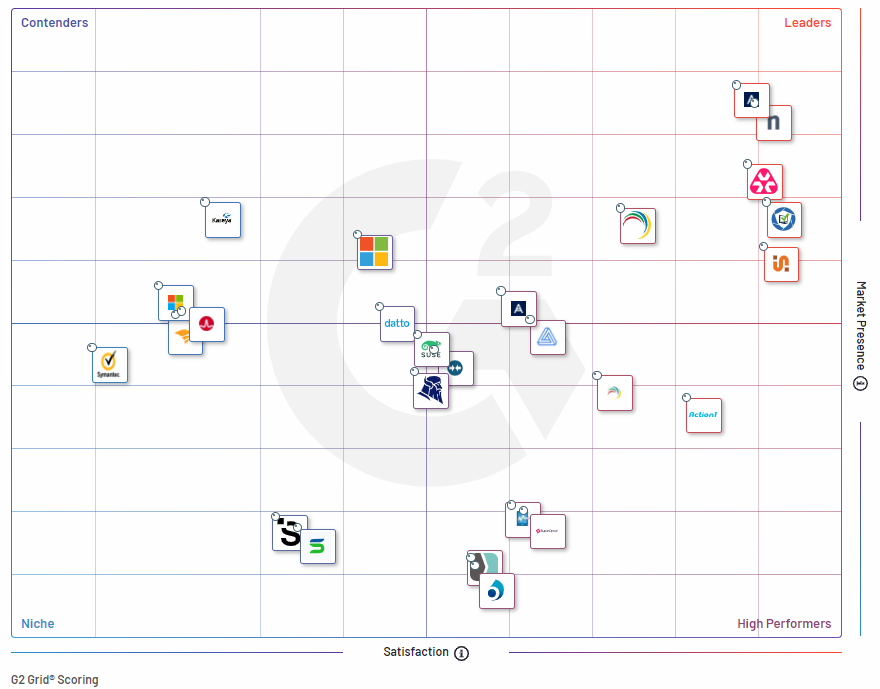The Ultimate Windows Patch Management Handbook: Best Practices & Tools

Windows Patch Management is an essential process for any organization that uses Windows operating systems. Keeping systems up to date is crucial to ensure security, performance, and reliability.
In this article, we will cover the basics of Windows Patch Management, its importance, types of Windows patches, how it’s implemented, challenges, solutions, traditional and modern methods, market trends, top tools, benefits of automation, and free tools for home users.
What is Windows Patch Management?
Windows Patch Management is the process of identifying, testing, and deploying updates to Windows operating systems, applications, and other components. Patches are small pieces of code that fix known issues, improve performance, and enhance security. These updates can come from Microsoft, third-party vendors, or in-house developers.
Here’s how the Windows OS is divided among the end users, seems Windows XP, 7 and 8 are still widely used than Windows 11.

Why is Windows Patch Management Important?
Security threats are increasing, and cybercriminals are always looking for new ways to exploit vulnerabilities in operating systems, applications, and devices. The longer a system goes without updates, the higher the risk of a security breach. Patching can prevent attackers from exploiting known vulnerabilities and protect sensitive data.
Patching also improves system performance and stability by fixing bugs, enhancing functionality, and optimizing resources. Regular updates can help prevent downtime, data loss, and other issues that may impact productivity, profitability, and customer satisfaction.
Types of Windows Patches
Windows patches can be categorized into different types, including:
- Security Patches: These updates address security vulnerabilities in the operating system or software applications.
- Feature Updates: These updates introduce new features, enhancements, and improvements to the operating system.
- Cumulative Updates: These updates contain all previously released updates and can be used to bring a system up to date quickly.
- Driver Updates: These updates include new or updated drivers for hardware components, such as printers, scanners, or graphics cards.
- Hotfixes: These are individual patches that address specific issues, often provided by the software vendor.
How is Windows Patch Management Process Implemented?
Implementing a Windows Patch Management process involves several steps:
- Inventory and Assessment: The first step is to identify the devices and software applications that need to be updated. This can be done using inventory tools, such as Microsoft System Center Configuration Manager (SCCM), or third-party solutions.
- Prioritization and Scheduling: Once the inventory is complete, the next step is to prioritize patches based on severity, impact, and relevance to the organization. Patches can then be scheduled for deployment, depending on the patching strategy.
- Testing: Before deploying patches to production systems, they should be tested in a lab environment. This can help identify any issues that may arise during deployment and ensure that the patch is compatible with other software and configurations.
- Deployment: Once patches are tested, they can be deployed to production systems using automated or manual processes. Automated deployment can save time and reduce the risk of human error, but manual deployment may be necessary for critical systems or specific configurations.
- Verification and Reporting: After deploying patches, it’s essential to verify that they were installed correctly and that systems are functioning correctly. Reporting can help identify issues, track progress, and provide a record of updates.

Rollback of Windows Patches: When and How to use it?
Rollback of Windows Patches refers to the process of undoing the changes made by a Windows patch update. It is a feature that is built into Windows operating systems that allows users to revert back to a previous version of an application or operating system if there are issues with the updated version.
Sometimes, after installing a Windows patch, users may experience issues with their system such as crashes, errors, or compatibility issues with other applications. In such cases, the best solution may be to rollback the patch to the previous version to restore the system’s stability.
The rollback feature is available for Windows patches that are installed using Windows Update or Microsoft Update. When a patch is installed, Windows creates a restore point that contains the system settings and files before the update was applied. If the patch causes issues, users can use the restore point to revert back to the previous state of the system.
Rollback of Windows Patches is typically a straightforward process. Users can access the System Restore feature in Windows to select the restore point created before the update was installed. The System Restore feature will then restore the system to the state it was in before the patch was installed.
However, it is important to note that not all updates can be rolled back, especially if they are part of a cumulative update or if they have been installed for an extended period of time. In such cases, the only solution may be to uninstall the update manually or seek assistance from a qualified IT professional.
What are the Challenges of Windows Patch Management?
Windows Patch Management can be a challenging task for IT departments, including:
- Volume and Frequency: The number of patches released can be overwhelming, and new patches are released regularly, making it difficult to keep up.
- Compatibility Issues: Patches may not be compatible with certain configurations or third-party applications, leading to conflicts and system instability.
- Time and Resource Constraints: The patching process can be time-consuming, requiring dedicated staff and resources.
- System Downtime: Installing patches may require system restarts and this may result in system downtime and disruption to business operations.
- Compliance and Auditing: Organizations may be subject to regulatory requirements or industry standards that mandate specific patching procedures and reporting.
How to Overcome Those Patching Challenges?
To overcome the challenges of Windows Patch Management, organizations can implement best practices such as:
- Prioritization: Prioritize critical patches based on the severity and impact on the organization. Focus on patches that address known vulnerabilities that are actively exploited.
- Testing: Test patches in a lab environment before deploying to production systems to identify any issues that may arise during deployment and ensure compatibility.
- Automation: Use automated tools to streamline the patching process, reduce the risk of human error, and save time and resources.
- Monitoring: Monitor systems for missing patches, and ensure systems remain up to date to address new vulnerabilities and reduce the risk of breaches.
- Reporting: Implement reporting to track patch status, identify issues, and demonstrate compliance with regulatory requirements.
Traditional and Modern Way of Windows Patch Management
Traditionally, Windows Patch Management has been a manual and time-consuming process that requires dedicated staff and resources. IT teams would manually download, test, and deploy patches, which could take days or even weeks to complete.
However, modern Windows Patch Management solutions have automated many of these tasks. These tools can identify missing patches, test patches in a lab environment, and deploy patches to production systems automatically. Automated patching can save time, reduce the risk of errors, and ensure systems remain up to date.
Popular Custom Scripts used in Windows Patch Management routines
System administrators often use custom scripts to help manage Windows Patch Management routines, PowerShell, VBScripts and Batch Scripts are most common scripting methods employed by IT admins.
Here are three examples of custom scripts for PowerShell, Batch Scripts, and VBScripts that are commonly used by system administrators in Windows Patch Management:
- PowerShell Scripts:
- Install-WindowsUpdate.ps1: This script installs Windows updates automatically using PowerShell. It checks for updates, downloads them, and installs them on the system.
- Get-WindowsUpdate.ps1: This script retrieves information about the Windows updates installed on a system, such as the update name, date installed, and status.
- Remove-WindowsUpdate.ps1: This script removes Windows updates from a system automatically using PowerShell.
- Batch Scripts:
- InstallPatch.bat: This script installs a specific Windows patch silently using the command line. It checks for the patch’s presence and installs it if it is not already installed.
- CheckPatchStatus.bat: This script checks the status of a specific Windows patch on a system, such as whether it is installed or not, and generates a log file.
- UninstallPatch.bat: This script uninstalls a specific Windows patch from a system silently using the command line. It checks for the patch’s presence and uninstalls it if it is already installed.
- VBScripts:
- InstallUpdate.vbs: This script installs Windows updates automatically using VBScript. It checks for updates, downloads them, and installs them on the system.
- CheckUpdateStatus.vbs: This script retrieves information about the Windows updates installed on a system, such as the update name, date installed, and status, and generates a log file.
- UninstallUpdate.vbs: This script removes Windows updates from a system automatically using VBScript.
These custom scripts can be used by system administrators to automate tasks related to Windows Patch Management, such as installing or removing Windows updates, checking patch status, and generating reports. They can help save time and effort and ensure that systems are kept up-to-date and secure.
Windows Patch Management Market and Trend Analysis
The Windows Patch Management market is expected to grow at a compound annual growth rate (CAGR) of 10.2% from 2021 to 2028, according to a report by Grand View Research. The increasing number of security breaches, the rise in the adoption of cloud-based patch management solutions, and the growing demand for automated patching are the primary drivers of market growth.
The report also identifies the key players in the Windows Patch Management market, including Microsoft Corporation, IBM Corporation, Symantec Corporation, and VMware Inc.

Top 10 Best Windows Patch Management Tools in the Market
Windows Patch Management tools can help organizations streamline the patching process, save time, and reduce the risk of errors. The following list includes the top 10 best Windows Patch Management tools in the market, categorized as Leaders, Challengers, Visionaries, and Niche Players.
Leaders:
- Microsoft Endpoint Manager
- Ivanti Patch Management
- ManageEngine Patch Manager Plus
Challengers:
- SolarWinds Patch Manager
- ConnectWise Automate
Visionaries:
- IBM BigFix
- BMC Helix Remediate
Niche Players:
- PDQ Deploy
- GFI LanGuard
- Action1 Endpoint Security Platform
Benefits of Automated Windows Patch Management Process
Automated Windows Patch Management can provide several benefits for organizations, including:
- Time Savings: Automated patching can save time by eliminating manual processes, reducing the time required to patch systems, and freeing up IT resources for other tasks.
- Security: Automated patching can help address known vulnerabilities quickly, reducing the risk of a security breach.
- Consistency: Automated patching ensures that all systems are patched consistently, reducing the risk of missing patches or configurations.
- Scalability: Automated patching can scale to support large and complex environments, reducing the effort required to patch thousands of systems.
Importance of redefining Windows Patch Management regularly
Periodically redefining your Windows Patch Management process is important for several reasons. Here are a few:
- Emerging Threats: Cyber threats are evolving constantly, and new vulnerabilities are discovered regularly. A Windows Patch Management process that is not regularly updated may not adequately address these new threats. By redefining the process periodically, you can ensure that your organization is better equipped to handle emerging threats.
- System Changes: Organizations are constantly evolving and changing. New software applications, hardware, and systems are being introduced all the time. These changes can affect your Windows Patch Management process. By redefining your process periodically, you can ensure that your patch management process is still effective in the context of your evolving IT environment.
- New Technologies: New technologies, such as cloud computing and virtualization, are changing the way that IT systems are managed. As a result, the Windows Patch Management process may need to be redefined to take advantage of these new technologies.
- Compliance Requirements: Regulatory compliance requirements are also changing all the time. A Windows Patch Management process that was compliant a few years ago may not be compliant today. By redefining your process periodically, you can ensure that your organization remains compliant with the latest regulations.
- Organizational Goals: Organizational goals may also change over time. For example, an organization may decide to focus on reducing costs or improving system uptime. By redefining your Windows Patch Management process periodically, you can ensure that your process aligns with your current organizational goals.
In summary, redefining your Windows Patch Management process periodically is important to ensure that your process remains effective in the face of emerging threats, system changes, new technologies, compliance requirements, and organizational goals. By keeping your process up to date, you can better protect your organization against cyber threats, reduce downtime, and maintain regulatory compliance.
List of Free Windows Patch Management Tools for Home Users
For home users, there are several free Windows Patch Management tools available. These tools can help keep personal devices up to date, protect against security threats, and improve performance. The following list includes some of the best free Windows Patch Management tools for home users.
- Patch My PC
- Secunia PSI
- SUMo
- Heimdal Free
- Ninite
These tools can scan for missing patches, download and install updates, and provide notification of new patches. They can also help manage third-party applications that are commonly targeted by cybercriminals.
Windows Patch Management is a critical component of a cybersecurity strategy that helps organizations protect against known vulnerabilities and reduce the risk of a security breach. Windows Patch Management can be a complex and time-consuming process, but it can be streamlined with automated tools that save time, reduce the risk of errors, and ensure systems remain up to date.
To implement an effective Windows Patch Management process, organizations should prioritize critical patches, test patches in a lab environment, automate the patching process, monitor systems for missing patches, and report on patch status.
There are several Windows Patch Management tools available in the market that can help organizations automate the patching process, save time, and reduce the risk of errors. The top 10 best Windows Patch Management tools include Microsoft Endpoint Manager, Ivanti Patch Management, and ManageEngine Patch Manager Plus.
For home users, there are several free Windows Patch Management tools available, such as Patch My PC, Secunia PSI, and SUMo. These tools can help keep personal devices up to date, protect against security threats, and improve performance.








